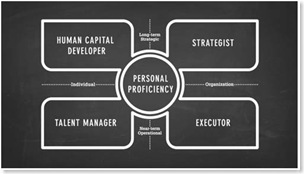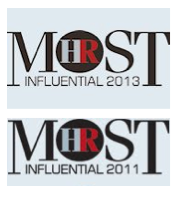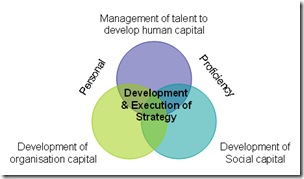 Ulrich's new book deals with the basic aspects of leaderships, or common rules, that he suggests can be effectively used by all leaders, regardless of their context or organisation.
Ulrich's new book deals with the basic aspects of leaderships, or common rules, that he suggests can be effectively used by all leaders, regardless of their context or organisation.
It's a rather strange area for Ulrich to focus on, as he has already said that it is the piece above the leadership code, the leadership brand, that differentiate one firm from another (and therefore provide a basis for competitive advantage). But then, the basics are clearly important too.
The code consists of four parts, mapped out by two dimensions: time (near and long-term) and focus (individual and business), providing a model which will ring a bell for most HR practitioners), plus a further area: personal proficiency, at the centre.
These provide five rules for leadership:
- Strategist: shape the future
- Executor: make things happen
- Talent manager: Engage today's talent
- Human capital developer: build the next generation
- Personal proficiency: invest in yourself.
Ulrich emphasises that this model provides a comprehensive structure and guidance for developing leadership capability, and that this is an improvement on a traditional shopping list of leadership attributes. But I'm still going to suggest an update to his model.
Firstly, I'd like to add another area of focus on the horizontal axis of the model which is the social aspect of an organisation, and responds to the points made by Henry Mintzberg, Gareth Jones and Rob Cross, and which I've discussed on my social business blog. This would extend the horizontal axis to include individual, social and business perspectives.
And then, I'd also want to add something on organisational effectiveness too (Ulrich himself has commented that organisational development requires a greater focus in comparison to talent management). And I'd move the strategist / executor focus to the centre of the model. So I'd end up with three areas of focus on the horizontal axis of Ulrich's model, corresponding to human, organisational and social capital, providing something like this:
OK, this model isn't based on the same level of meta research as that conducted by Ulrich and his colleagues, but I do believe that organisation design / development, and the management of people and the organisation for the accumulation of social capital, are increasingly important aspects of any leaders' role. So I think they should be included in the code.
(The leadership brand, to me, is then simply the alignment of these same aspects around a particular organisational capability, rather than simply a looser linkage to a shorter-term business strategy.)






























Jon, I'm just marking SHRM exams and students have been taught that hard=capital and soft=assets.
ReplyDeleteJust thought I hadn't misunderstood your stance. You are all for metrics and clean design etc but you see the soft/pink as insufficiently attended to - sorry for the syntax.
Hi Jo, yes, that's pretty much it. Best regards, Jon.
ReplyDeleteHi John,
ReplyDeleteI found your introduction to the leadership code and your suggested enhancements very interesting. I have recommended this article as one of the top five in our roundup of the leadership week.
http://experientiallearningcentre.blogspot.com/
Keep up the great work.
Thanks Simon!
ReplyDelete